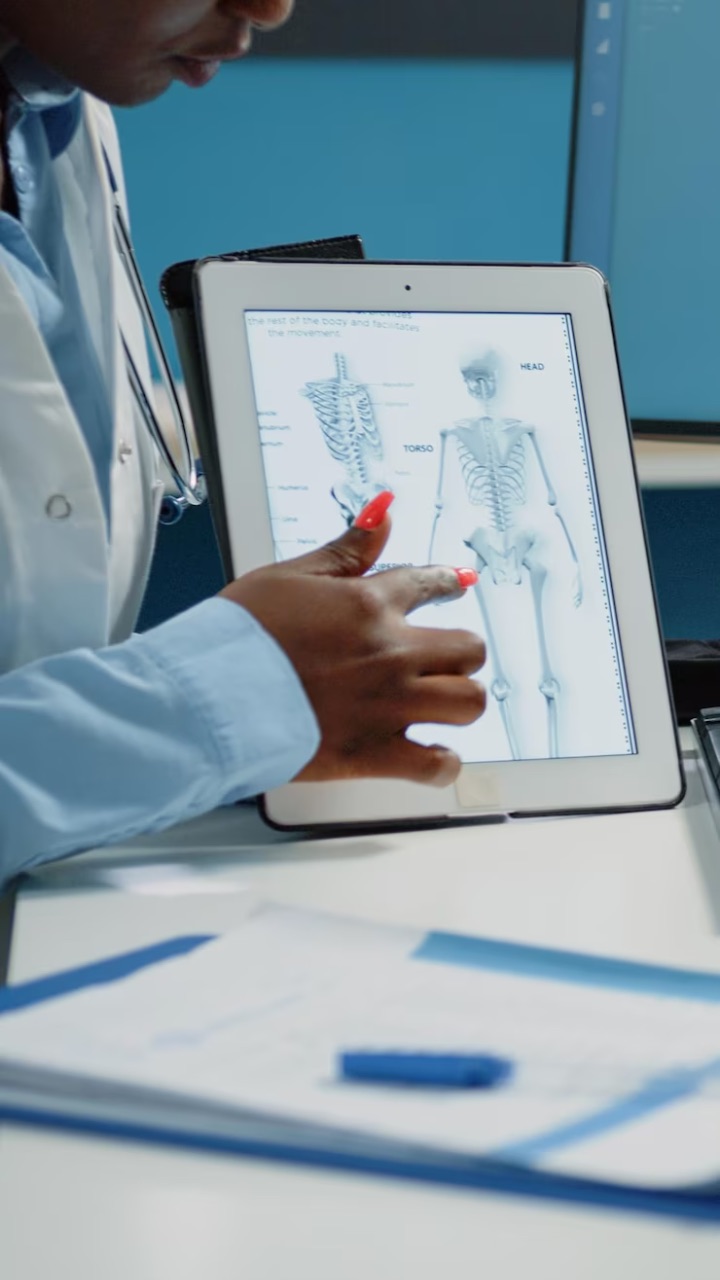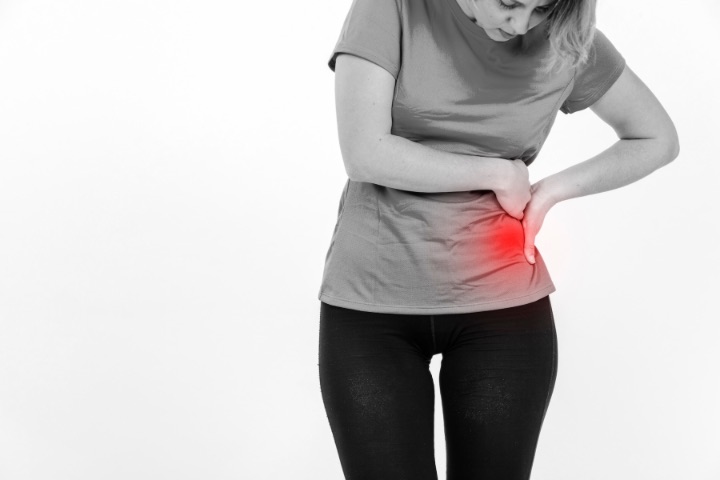If you’re suffering from hip pain, stiffness, or a limited range of motion, you might be dealing with hip arthritis. This condition affects millions around the world and can have a major impact on your ability to move and live life to the fullest.
It’s more than just a slight discomfort – it’s a degenerative joint disorder that causes inflammation of one or more joints in the hip. Different types of hip arthritis have their own sets of symptoms and treatments. Knowing the differences is essential to effectively managing the condition.
Let’s look at the causes, symptoms, diagnosis, and treatments available for hip arthritis. We’ll also discuss potential complications from surgical treatments and the recovery process.
If you’re consistently feeling discomfort in your pelvic area, particularly during movement or after long periods of rest, it could be a sign that something’s wrong. This could signify hip arthritis, which usually displays certain symptoms.
Pay attention to these signals from your body and promptly seek medical attention for an accurate diagnosis and treatment choices.
When experiencing hip pain, your doctor may use several diagnostic tools to identify the cause. X-rays can provide a clear picture of your hip joint and detect any degenerative changes, which could be a sign of arthritis. MRI and CT scans offer a more detailed view, allowing for an analysis of both the bones and the nearby soft tissues.
This non-invasive procedure can help pinpoint areas where inflammation has caused damage and determine the type and stage of arthritis.
 Photo Credit: drobotdean, Freepik
Photo Credit: drobotdean, Freepik
The x-ray for hip pain also helps your physiotherapist or masseuse create an effective treatment plan tailored to your specific needs, as they’ll know exactly where the problem lies. Remember, knowledge is power – understanding your condition allows you to take control and seek appropriate treatments like hip pain massage or targeted physio exercises.
Beyond X-rays, you may also be asked to undergo an MRI scan. MRIs can create detailed images of soft tissues and organs, providing a thorough view of what is happening inside your body. This tool can uncover issues not visible through an X-ray.
In regards to hip arthritis, an MRI is especially beneficial. It helps determine the types of hip arthritis you have. An MRI for hip pain reveals inflammation and any structural abnormalities and early degenerative changes in cartilage or bone that may not be visible on an x-ray.
This information is essential for forming an exact hip arthritis treatment plan tailored to your specific needs and intended for successful relief from pain.
CT scan provides a more detailed image of your bones, making it a vital tool for detecting hip arthritis.
Here are some key points about CT scan for hip pain:

Photo Credit: DCStudio Freepik
Comprehending these tools is essential as they are a part of your journey towards comfort from the pain caused by arthritis. Remember, the right hip arthritis treatment begins with accurate diagnosis.
When considering treatment for hip arthritis, both non-surgical and surgical treatments are available. Non-surgical treatments often include lifestyle changes, physical therapy, and medications to reduce pain and improve movement. If these treatments cannot provide relief, your doctor may recommend surgical options such as hip replacement or resurfacing surgery as a more definitive solution.
When considering nonsurgical treatment options for hip arthritis, several effective strategies can be used. Modifying lifestyle and undergoing physical therapy can improve flexibility, reduce pain, and increase strength. Assistive devices, such as walkers or canes, provide much-needed support. Medications, like NSAIDs or corticosteroids, help manage inflammation and provide relief.
You’ll be surprised how simple lifestyle changes can drastically reduce hip arthritis pain and enhance your overall quality of life.
Consider using a pillow or a wedge cushion while driving to alleviate discomfort. Wearing a hip belt for pain can also provide relief.
These alterations, in combination with maintaining a healthy weight and regular exercise, can significantly reduce your symptoms.
Embracing physical therapy can be a game changer for managing discomfort and improving mobility. A physio hip pain program can provide exercises to increase strength and flexibility.
Alternative therapies, such as acupuncture for hip pain, may also offer relief.

Photo Credit: Freepik
Incorporating pilates or yoga for hip pain into your routine could boost joint health and give you the freedom from pain you desire.
Navigating your world doesn’t have to be a struggle. You can regain independence and find pleasure in everyday activities with appropriate assistive devices.
When symptoms of hip arthritis become difficult, these tools can relieve your pain. Braces that support movement and walking aids that offer stability are essential parts of treatment after diagnosis.
Embrace these solutions to make living with hip arthritis more manageable.
When it comes to pain management, a wide selection of medications available can reduce inflammation and provide relief.
From hip pain after a C-section to discomfort from intense activities such as deadlifts, the right medicine can be beneficial.
Post-pregnancy hip pain can also be managed with suitable medication.
It’s best to consult your doctor to get the best treatment for your symptoms.
If your hip arthritis has reached a point where nonsurgical treatments aren’t effective, consider surgical options.
A popular and effective procedure is total hip replacement. This surgery replaces the joint’s damaged parts with artificial components.

Photo Credit: stefamerpik, Freepik
An alternative is hip resurfacing, a less invasive procedure. It caps the hip joint’s ball with a metal prosthesis instead of replacing it entirely.
Undergoing a total hip replacement is a highly effective procedure for relieving the pain caused by severe arthritis. This treatment includes removing and replacing the damaged joint with an artificial one. It results in a substantial reduction of hip arthritis symptoms and improved mobility post-surgery. This diagnosis brings freedom from pain and improved quality of life.
Imagine being able to dance, jog, or even just walk pain-free again – that’s the true potential of joint resurfacing. Hip resurfacing can reduce chronic hip pain and even address conditions like scoliosis. It involves minimal bone removal and offers a spiritual meaning to regaining freedom of movement. However, be sure to maintain the correct squatting form to avoid hip flexor pain post-procedure.
While relief from hip arthritis may be found through surgical treatment, it’s vital to be aware of potential complications that may occur.

Photo Credit: Freepik
Different hip replacement issues might arise post-surgery:
If any of these symptoms occur, medical help should be sought. For example, treatment for groin pain after hip replacement is essential to avoid further complications and ensure your freedom.
Understanding the potential complications of surgical treatment for hip arthritis is essential, but the recovery period is just as vital in restoring your mobility and freedom.
You will experience a gradual decrease in your hip arthritis symptoms, beginning with light exercises under the guidance of a physiotherapist, gradually gaining strength and movement in the affected area. Eventually, you should return to normal activities with no pain or discomfort.
Regular follow-ups are necessary for monitoring progress and ensuring successful recovery. Everyone’s path after diagnosis of hip arthritis is different based on factors such as age and overall health status. Adhering to your doctor’s instructions during this period can improve your hip arthritis treatment outcomes.
The optimal treatment for avascular necrosis of the femoral head is largely dependent on the severity of the condition. For less severe cases, non-surgical treatments such as medications, physical therapy, and the use of crutches to alleviate weight on the affected hip may be effective. In more severe instances, surgical options may be necessary. These can include core decompression, bone transplant (graft), bone reshaping (osteotomy), or joint replacement.
Arthritis in the hip typically presents as a dull or sharp pain in the hip, groin, or thigh. The pain may be more noticeable during or after physical activity and may worsen over time. Other symptoms can include stiffness, reduced range of motion in the hip, and a ‘grating’ sensation during movement. In severe cases, it may cause difficulty walking or performing daily activities.
Treatment for an arthritic hip aims to manage pain, improve mobility, and prevent further joint damage. Non-surgical treatments include physical therapy, weight management, and medications such as nonsteroidal anti-inflammatory drugs (NSAIDs), corticosteroids, or disease-modifying antirheumatic drugs (DMARDs). Surgical options such as hip resurfacing or hip replacement may be considered if these treatments are ineffective.
Yes, walking can be beneficial for hip arthritis. Regular, gentle exercise helps strengthen the hip muscles, improve flexibility, and reduce stiffness. However, it’s important to listen to your body and not overdo it. If walking causes increased pain, trying lower-impact activities such as swimming or cycling may be helpful.
Yes, there are several treatments available for hip arthritis. These include lifestyle modifications like regular exercise and weight management, physical therapy, and medications to manage pain and inflammation. Surgical interventions such as hip resurfacing or hip replacement may be necessary in more severe cases.
In severe cases, hip arthritis can lead to disability. The pain and stiffness can limit mobility and make it difficult to perform daily activities. However, with appropriate treatment, most people with hip arthritis can manage their symptoms and maintain a good quality of life.
While you can’t prevent all cases of hip arthritis, there are steps you can take to reduce your risk. These include maintaining a healthy weight, staying active, avoiding injuries, and managing chronic conditions that can contribute to arthritis, such as diabetes and rheumatoid arthritis. Regular check-ups with your doctor can also help detect any early signs of arthritis.